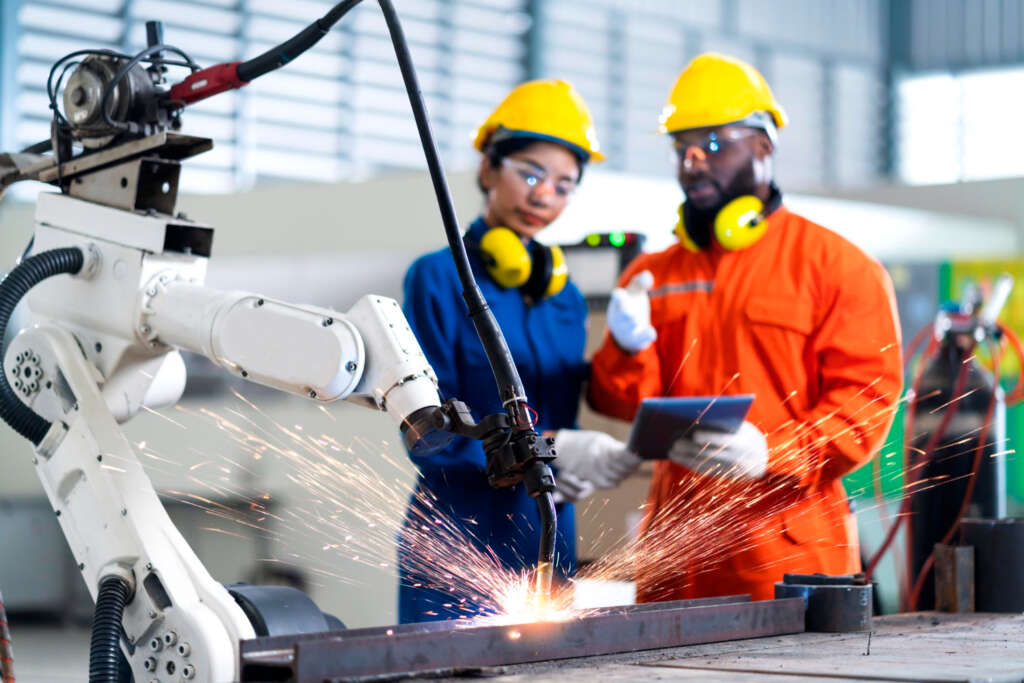
To meet production needs, automotive parts manufacturers must work with reliable steel fabricators who can produce high-capacity components. Outsourcing robotic welding projects to these trusted partners is a cost-effective way to minimize stress on manufacturing.
Robotic welding systems are programmed to follow precise paths, resulting in strong and consistent welds. These systems also allow continuous operations, eliminating downtime associated with shift changes and breaks.
Improved Quality
Welding robots can be programmed to follow a specific design or guided by machine vision, an imaging-based automatic inspection and analysis technology. This ensures that every welding operation is done the same way and produces consistent quality, which is a major benefit for customers regarding safety-critical components.
Additionally, because robotic welding is so precise, splatter is reduced, and materials are used more efficiently. This translates into cost savings for your company by reducing waste and increasing productivity.
Although installing an automated system requires a significant investment, the initial costs are quickly earned back through increased production and profit margins. Moreover, it allows you to focus on more challenging work for your skilled welders and place them in positions where they can showcase their talents. This helps to improve morale and provides career advancement opportunities for your employees, increasing employee retention and overall business value.
Reduced Costs
Robotic welding is a cost-effective way to increase production capacity and improve quality. It also eliminates human error, which can result in expensive repairs or rework.
Even the most skilled welders can still make mistakes. They’re prone to distractions and can tire of repeating the same task.
Robots are programmed to avoid those errors and complete a job consistently so that they can save your business money. Plus, robotic welding systems can be set up to minimize downtime. For example, storing an extra filler metal package near the robot reduces downtime and costs for transporting a new package into the welding cell.
With the dwindling skilled labor pool and growing demand for automotive production, investing in robotic welding is a smart move. It can help you boost productivity, save on employee salaries, and increase production capability. However, the perceived high upfront costs of robotics may discourage companies from taking the plunge.
Increased Productivity
Robotic welding can be programmed to perform specific tasks with high accuracy. The programming can be done through the teach pendant in the welding cell or offline by a CAD model. The offline program can get the robot to within half a of centimeter of its final trajectory, so manual touch-up is only necessary during a crash.
Because a robotic system operates at such a high speed, it takes much less time to complete projects than humans would. And because the robot doesn’t tire or need to take breaks or go on vacation, it can continue to produce consistent results day after day.
Using a robot also saves money in the long run on other labor costs like employee compensation and energy bills. In addition, the slender robotic arm of these systems provides better access to small or hard-to-reach areas than humans can. Those savings add up and allow your staff to focus on more high-level aspects of production.
Increased Safety
Robotic welding eliminates the need for humans to perform many repetitive tasks, reducing worker burnout and boredom. This, in turn, improves employee morale and boosts productivity.
It also saves companies money by reducing material waste caused by bad welds. Additionally, it minimizes the usage of consumables such as fluxes and gas.
Depending on the setup, the robotic welding system may include:
- An arm mount that holds the robot in place.
- A wire feeder that delivers filler material to the torch at a programmed rate.
- A cleaner removes molten metal spatter from the arm between welding cycles, prolonging the equipment’s life span.
While installing a robotic welding system requires careful consideration, planning, and significant investments of time and money, it can have a long-term positive impact on production and company profitability. Robotic welding can increase quality, improve consistency and efficiency, and reduce labor costs while creating new job opportunities for skilled workers.


